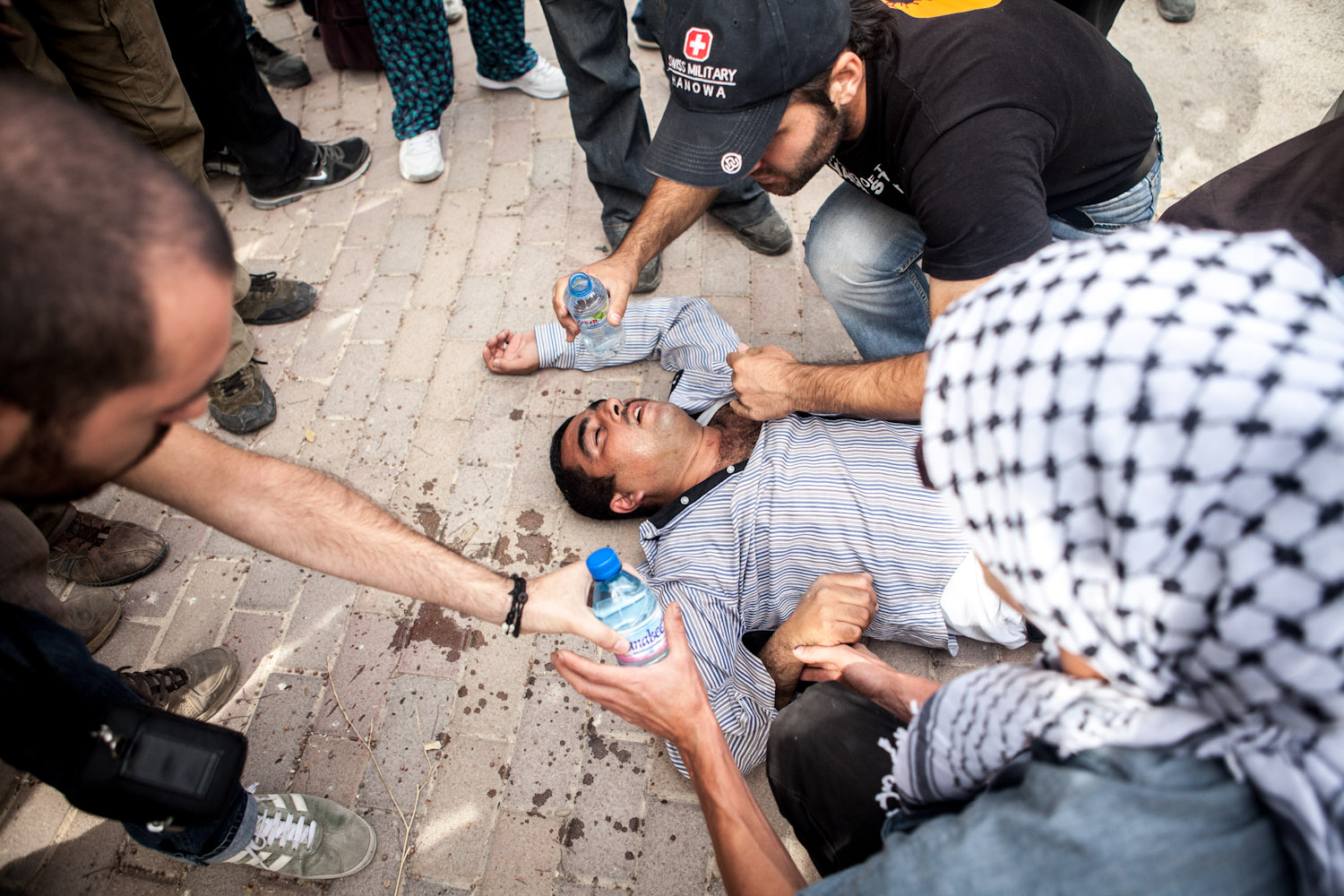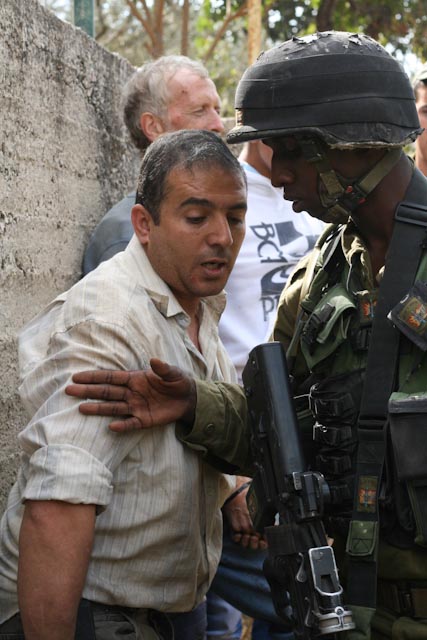Tag: Settlers
-
Settler harassment at Khan al-Luban [Update: Video added]
By Stephen Alexander 11 November 2012 | International Solidarity Movement, West Bank On Friday, the house at Khan al-Luban, south of Nablus was trespassed by settlers from the illegal settlement of Ma’ale Levona. The settlers attempted to destroy the water supply at the house. Earlier in the morning, house-owner Khalid al-Hamed, his two sons and…
-
Bassem Tamimi injured and arrested with 3 others at Boycott Israel protest
24 October 2012 | International Solidarity Movement, West Bank VIDEO from the action: Dozens of Palestinians and internationals protest at Rami Levy Supermarket near the illegal settlement of Sha´ar Benyamin on October 24th. This direct action aims to highlight the Boycott-Divestment-Sanctions (BDS) Campaign that seeks to promote a boycott of Israeli goods. Four people, including…
-
3 Arrested as Palestinians attacked by settlers and soldiers in Tel Rumeida
By Vicky Blackwell and Elyana Belle Photographs by Vicky Blackwell 22 October 2012 | International Solidarity Movement, West Bank VIDEO from Youth Against Settlements: UPDATE: 10.30pm – All 3 men have now been released without charge. Today, a group of settlers from the illegal settlement in Tel Rumeida arrived at Hashem Azzeh’s olive grove next to…


